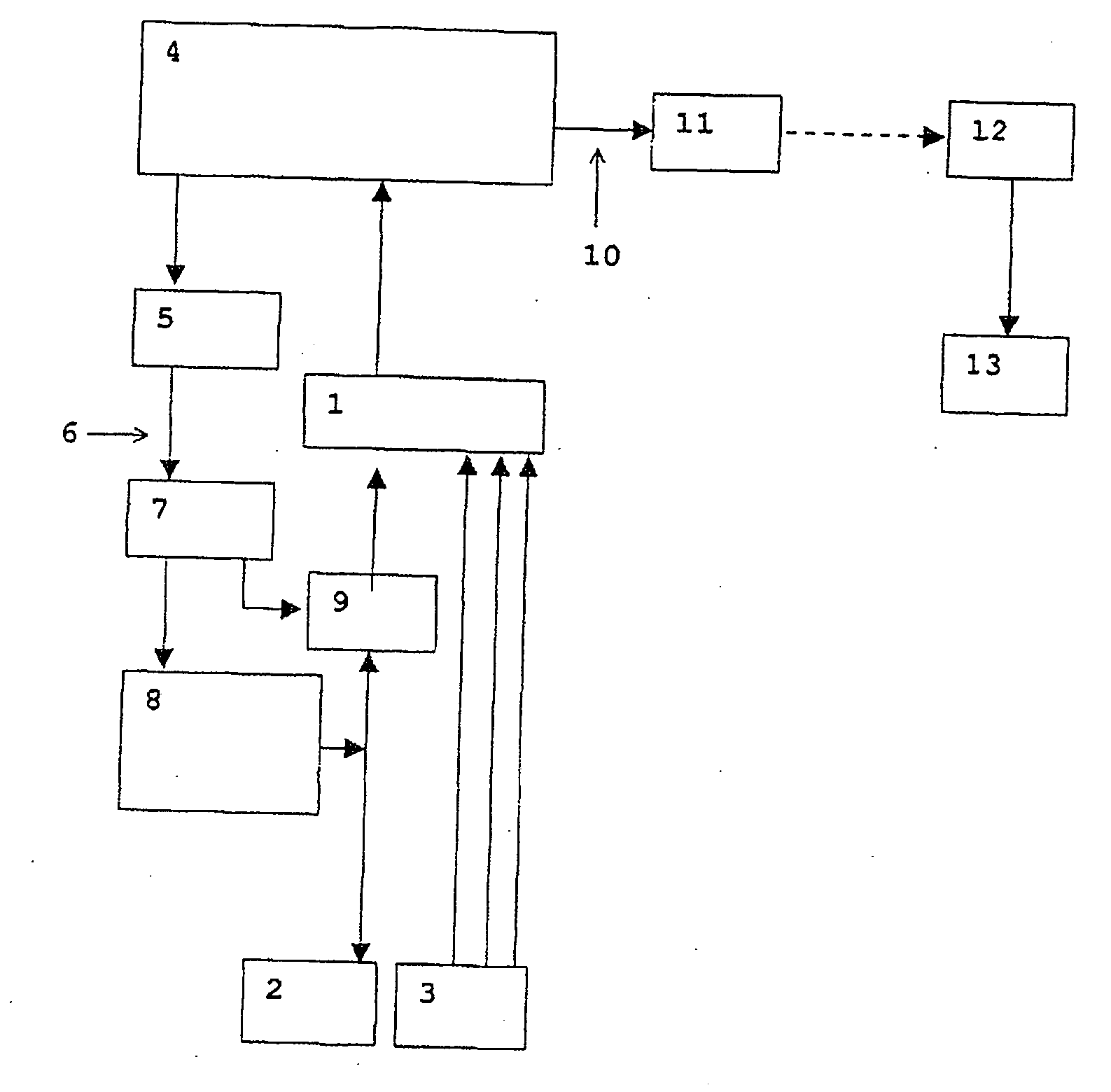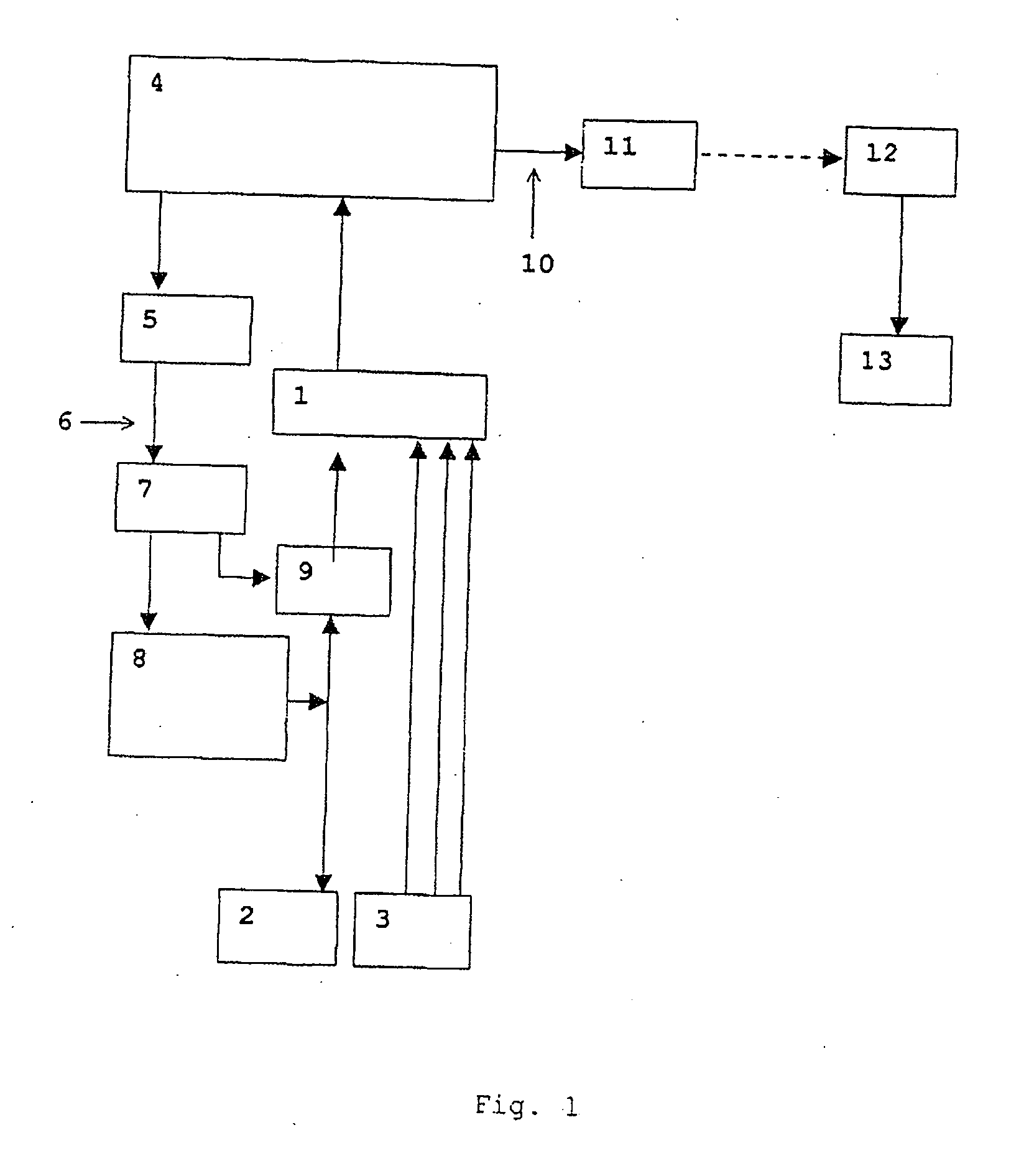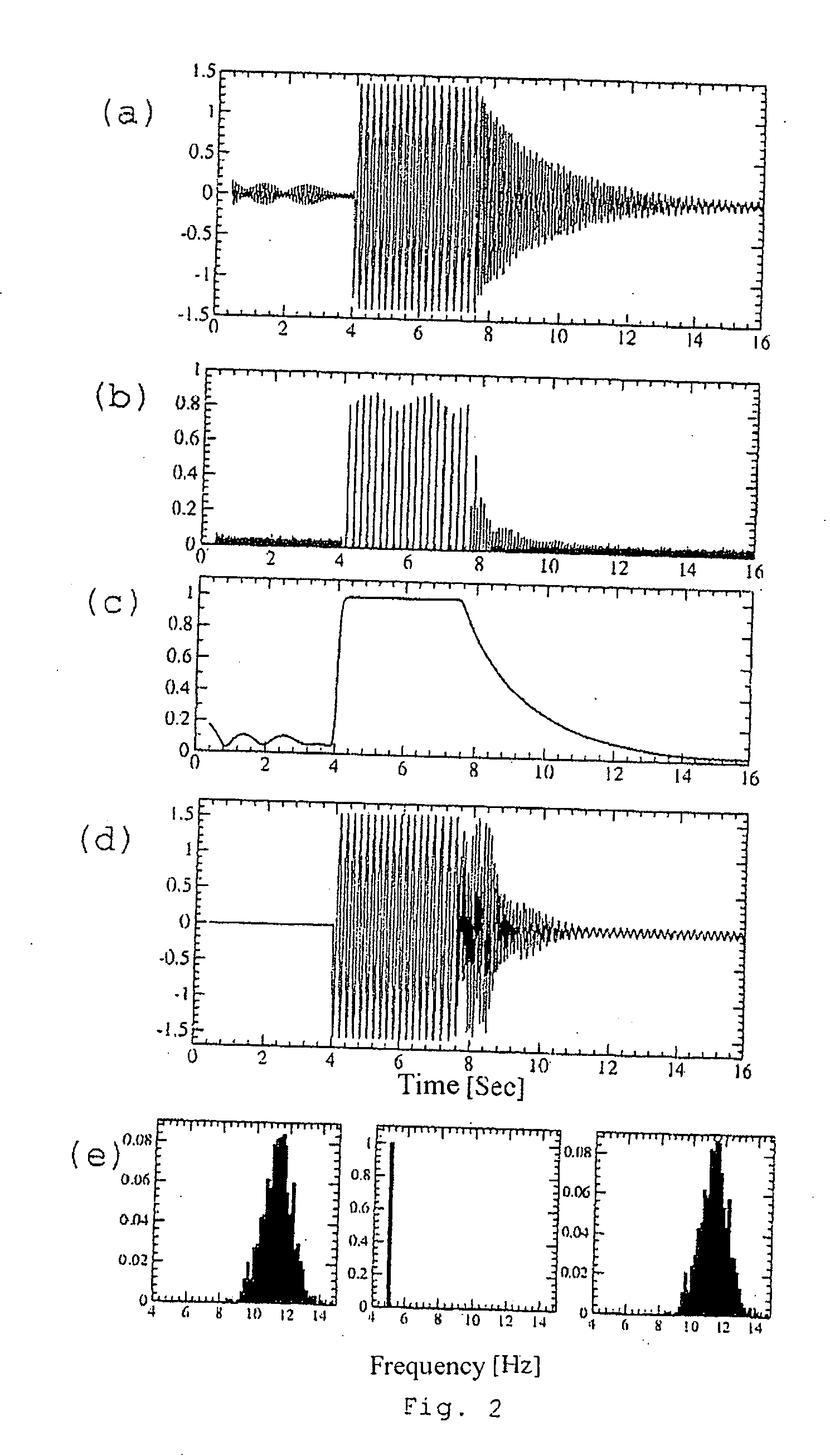Method and device for decoupling and/or desynchronizing neural brain activity
a neural brain activity and brain activity technology, applied in artificial respiration, therapy, application, etc., can solve the problem that the effective mechanism on which the standard depth stimulation is based has not been explained sufficiently
- Summary
- Abstract
- Description
- Claims
- Application Information
AI Technical Summary
Benefits of technology
Problems solved by technology
Method used
Image
Examples
Embodiment Construction
[0031] Reference will now be made in detail to the embodiments of the present invention, examples of which are illustrated in the accompanying drawings, wherein like reference numerals refer to the like elements throughout. The embodiments are described below to explain the present invention by referring to the figures.
[0032] In FIGS. 2a to d and 3a to d, the abscissa designate the time axes in seconds whereas along the ordinates, the measured neural activity (FIGS. 2a, 3a) or the firing pattern (FIG. 2b, 3b) or the extent of synchronization (FIG. 2c, 3c) or the sum of the coupling and stimulation influences (FIG. 2d, 3d) are in each case plotted in arbitrary units. The neural activity measured via sensors 3 (FIG. 2a, 3a) is used as the basis for generating the stimulation stimulus. In FIGS. 2e and 3e, the abscissa designates the frequency and the ordinates designate the relative number of neurons with the corresponding frequency.
[0033] The device according to FIG. 1 comprises an ...
PUM
 Login to View More
Login to View More Abstract
Description
Claims
Application Information
 Login to View More
Login to View More - R&D
- Intellectual Property
- Life Sciences
- Materials
- Tech Scout
- Unparalleled Data Quality
- Higher Quality Content
- 60% Fewer Hallucinations
Browse by: Latest US Patents, China's latest patents, Technical Efficacy Thesaurus, Application Domain, Technology Topic, Popular Technical Reports.
© 2025 PatSnap. All rights reserved.Legal|Privacy policy|Modern Slavery Act Transparency Statement|Sitemap|About US| Contact US: help@patsnap.com



